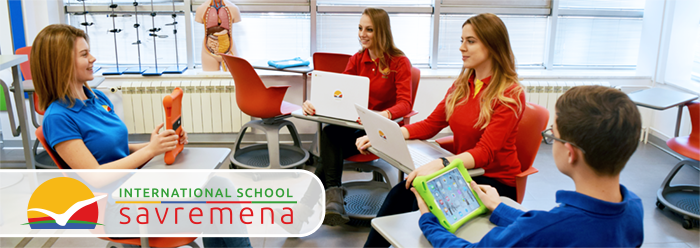
When thinking about teaching, the question that arises is how aware we are as to what we are actually doing in class and what kind of effect it has on the students?
If we assume that we conveyed to the students exactly what we had planned, we approach our work in a non-critical manner. If we base our effectiveness in class on the assumption that we’re working well, due to the fact that we haven’t received any feedback from the students, we have to wonder: are we making professional progress and to what extent?
In order to be better in what we do, we need to think about our work and evaluate it at any given moment. We need to perceive our own classes in a critical and creative manner, which means a critical consideration of our own practices, the received feedback and self-evaluation. Self-evaluation is an integral part of self-reflection, reflection on our own work.
Self-reflection is important, because it means thinking about our own practices. It enables us to single out the aspects of our work we are satisfied with, and those we might improve. Self-reflection is a circular process which includes a systematic approach to the acquisition and analysis of our thoughts and observations, as well as the students’ thoughts and observations regarding our teaching process. Reflective teaching means monitoring what we do in class, how we do it and thinking about whether it produces the desired effects. This procedure leads to a change and an enhancement in the quality of teaching.
What can help us reflect?
1. Feedback from our students.
Asking students about the lesson, what they liked or disliked about it, what they found to be difficult or easy, what they understood or failed to understand can be useful while reflecting. A brief survey of student opinion can be done at the end of a lesson, either online or by asking them directly. As equal members of the teaching process, students are the ones that form opinions about it. Being open to the opinions of students enables us to view our work from a completely different perspective.
2. Keeping a diary of impressions from lessons.
Write down your first impressions right after each lesson. We can write down details, describe our behaviour and the behaviour and reactions of our students which we view as important for self-reflection.
3. Observing lessons and learning from colleagues.
Inviting colleagues to observe your lessons, observing the work of experienced colleagues and exchanging experiences. By doing that, you can focus on a specific aspect of the lesson or different ones.
4. Managing a portfolio.
Reflection is key for professional development. While reflecting on one’s own performance, it is useful to maintain a personal portfolio.
Our self-reflection is often framed through questions. Some important ones to bare in mind include:
- Was the objective of the lesson achieved?
- Do I follow whether students understand the materials during the lesson, if so in what manner? How do I respond when I see that students don’t understand something?
- Do I follow whether students maintain focus during the lesson?
- Do I check the background knowledge of students before we start covering new materials?
- Do I establish a connection between different units in the same subject or between different subjects? To what extent is the teaching interdisciplinary? Do I cooperate with colleagues enough to make it interdisciplinary?
- Have I ever had a guest, colleague or expert in a particular field attend my lesson?
- Do I “build knowledge” with students in class?
- What do I reward with a positive mark?
- How do I react when a student poses a question during my presentation about something I taught? How do I react when I don’t have an answer to the student’s question?
- What is my non-verbal communication like during the lesson? Am I smiling or do I look grumpy?
- How do I communicate with students?
- What do I sound like to students? What is my tone of voice like? Do I shout? Do I speak silently?
- Are my verbal and and nonverbal forms of expression in sync.
- How do I maintain discipline in the lesson? Do I punish the lack of discipline with a bad mark in the subject?
- Do I give students clear and complete feedback on their progression and performance?
- How do I know that my teaching was successful?
- What teaching methods do I use most often? Do I adapt them to the situation and in what way?
These questions, that motivate us to think about our goals, activities during lessons and used materials, students and class management lead us to thinking about what it is that we can do differently. This enables us to compare the quality of our teaching and enable us to become a better and more impactful teacher.
Author: Tijana Rajić
References:
- Brookfield, S. (1995). Becoming a critically reflective teacher. San Francisco: Jossey-Bass.
- Ivić, I, Pešikan, A. i Antić, S. (2001). Aktivno učenje 2: priručnik za primenu aktivnog učenja/nastave. Beograd: Institut za psihologiju.
- Provenzano, N. (2014). The Reflective Teacher: Taking a Long Look. [online] Edutopia. Available at: http://www.edutopia.org/blog/reflective-teacher-taking-long-look-nicholas-provenzano [Accessed 25 Apr. 2016].
- Quinn, R. E, Heynoski, K. and Thomas, M. (2014). The Best Teacher in You. San Francisco: Berrett-Koehler Publishers.
- Tice, J. (2016). Reflective teaching: Exploring our own classroom practice. [online] TeachingEnglish | British Council | BBC. Available at: https://www.teachingenglish.org.uk/article/reflective-teaching-exploring-our-own-classroom-practice [Accessed 24 Apr. 2016].



















